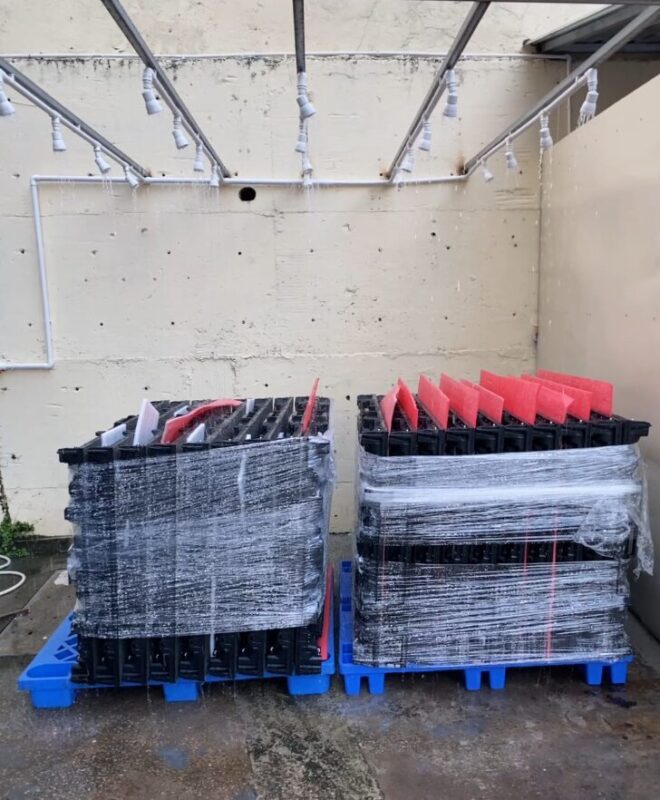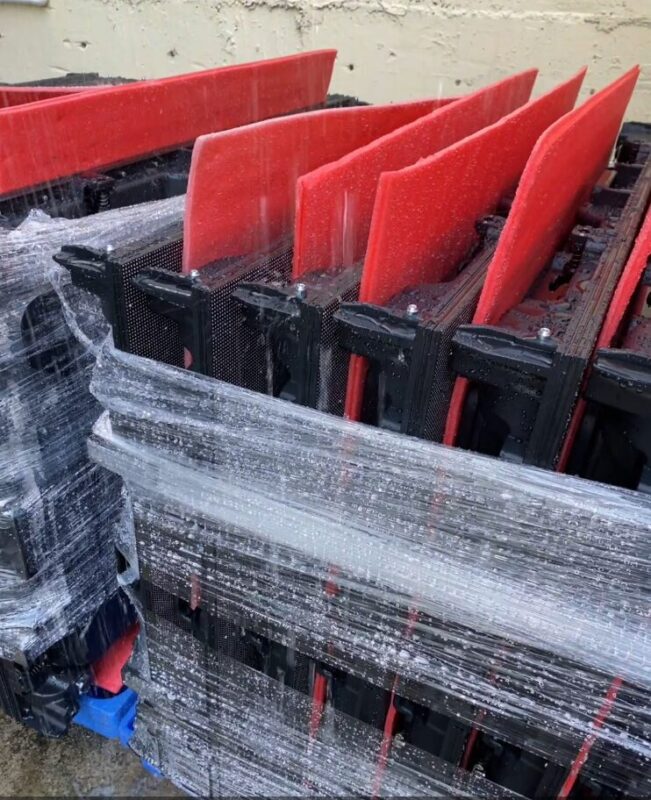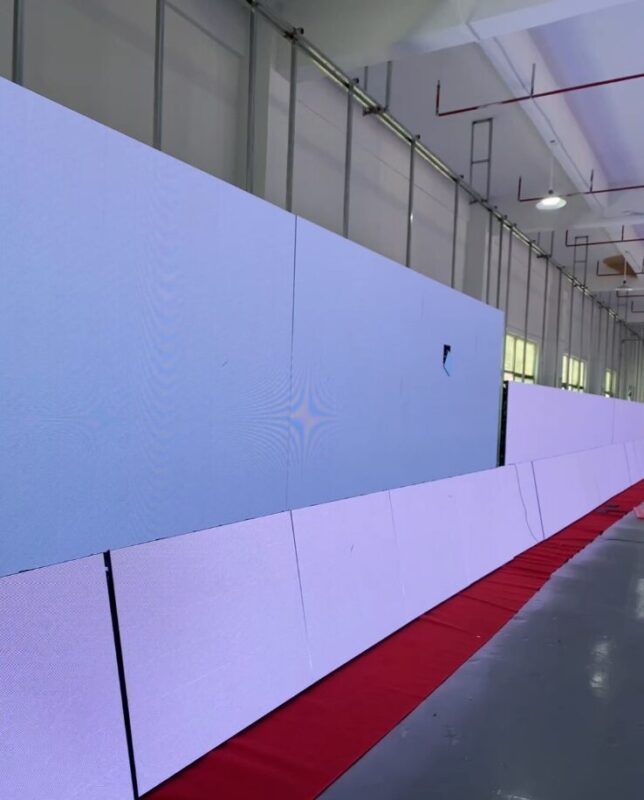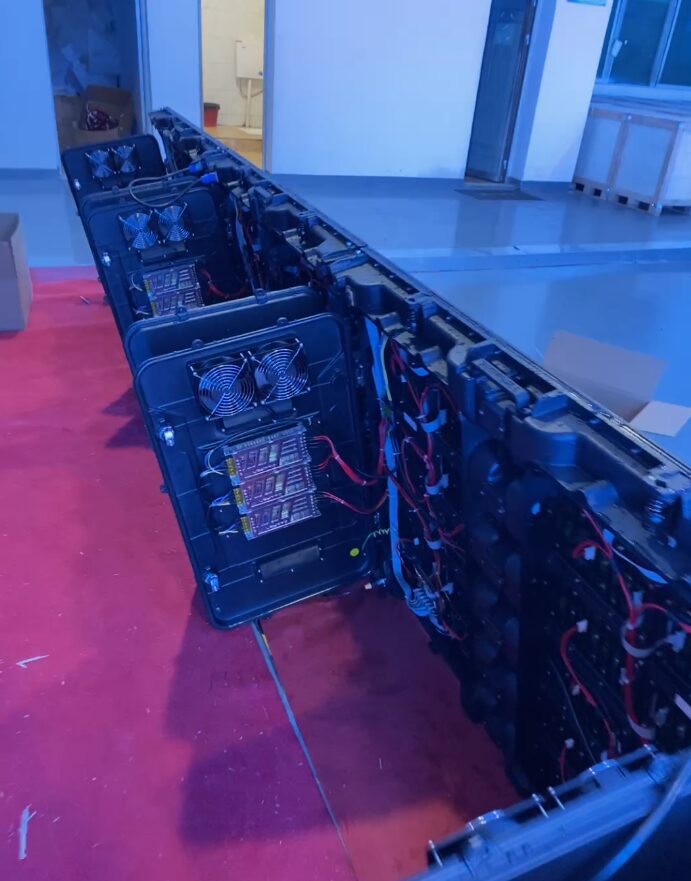全画面テスト: 屋外の LED スクリーンが水に長時間浸漬された後でも短絡が発生しない場合は信頼できますか? 2 時間?
As a professional LED display engineer, I believe reliability must be proven through standardized waterproof testing and real manufacturing quality, not marketing visuals. This article explores the testing logic, cabinet waterproof design, and how to verify true outdoor LED screen reliability.
目次
トグルI. Why Conduct the “2-Hour Full-Screen Water Drench + Power-On” Test?

The outdoor LED display cabinet is undergoing testing
The main challenge for outdoor LED displays is not just brief rain exposure, but whether water enters the LED cabinet and reaches internal circuits after prolonged storms. Even trace moisture may cause short circuits, dead pixels, or power module failure.
The full-screen water submersion test simulates severe outdoor conditions like U.S. coastal hurricanes or heavy thunderstorms. Two continuous hours of high-pressure water simulate these extreme environments—far tougher than ordinary rainfall.
しかし, the most critical step is the power-on waterproof test. Merely drying the cabinet is insufficient. Turning on the display immediately after water exposure proves whether the waterproof design truly isolates electronics. Only when a screen passes both “water exposure + power-on” phases can it be called reliably waterproof. This dual process validates potting protection, sealing, そして interface waterproofing, revealing any weak points invisible to casual tests.
II. What Core Designs Enable Outdoor Screens to Pass Testing?

Front view of the outdoor LED display cabinet under watering conditions
Not all LED displays can pass this test. Screens that genuinely achieve “no short circuits after 2 hours of water exposure followed by power-on” typically feature the following design details:
-
Rigorous cabinet sealing: Premium sealing strips made of weather-resistant rubber ensure tight adhesion. Drainage holes at the cabinet base prevent water accumulation. Some U.S. projects additionally apply anti-corrosion treatment for enhanced long-term reliability. This is where many cheap screens fail—don’t skip on sealing quality.
-
Module potting protection: Front panels achieve IP65 or higher protection ratings, while backs and connection points are fully encapsulated with waterproof potting compound. Even if trace water enters the cabinet, it cannot reach internal circuits. Here’s a pro tip: always ask for potting material specs to avoid inferior products.
-
Interface waterproofing: Aviation connectors and cables are encased in waterproof sleeves, with critical junctions coated in sealant to block water ingress through gaps. This step proves particularly crucial in real-world installations. If interfaces aren’t protected, water will find a way in—guaranteed.
III. How can users verify manufacturers’ tests aren’t staged?

屋外用 LED ディスプレイ キャビネットを分解して水の浸入を確認します。.
-
Examine testing details: Request manufacturers to provide full-process testing videos, focusing on “water application methods” そして “power-on screen illumination.” Standard testing should involve continuous high-pressure water jet spraying from multiple angles (front, 側面, top), not merely dripping water. After water exposure, technicians must disassemble the enclosure for internal inspection and power it on, confirming full-screen illumination without blackouts, flickering, or other anomalies. Don’t be fooled by edited clips; demand raw footage.
-
Question testing standards: Reputable manufacturers reference international standards like IEC 60529, specifying parameters such as water pressure (例えば, 0.3MPa), flow rate (例えば, 10L/min), distance, and angle—not merely stating “water poured for 2 hours.” If they can’t provide standard details, it’s a red flag.
-
Check Real-World Application Cases: Users should proactively request post-installation feedback, ideally obtaining documentation of typical deployed projects (例えば, city plazas, stadium displays) that confirm continued functionality after multiple heavy rainstorms. Actual application evidence carries greater weight than promotional videos alone. Always verify with real users—this can save you from costly mistakes.
IV. 結論: 購入時 outdoor LED displays, insist on “full-screen watering + power-on” testing.

After watering the outdoor LED display, conduct a power-on test.




